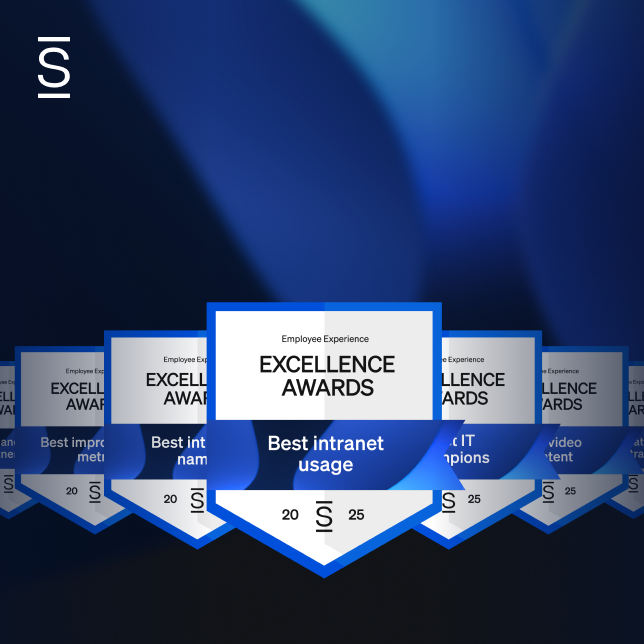Think about a failed workplace initiative. Chances are one of the root causes was ineffective communication. So what does effective communication look like?
A lot of web content on effective communication strategies focus on interpersonal communication: listen, give your undivided attention, be conscious with non-verbals, and so forth. All of these are important, but it’s equally important to take a step back and understand how the organization systematically supports internal communications. Organizations seeking effective communication strategies should focus on their holistic processes, not just individual skills or traits. This post focuses on these strategic components that foster effective communication.
10 Strategies to Effective Communication in the Workplace:
Effective Communication Strategy #1: Leadership needs to understand their role as communicators
Effective communication in the workplace starts here. If your leaders are poor communicators, everything else on this list will only take you so far. Leaders need to understand that employee communications is foundational to their role. A CEO should focus first on improving returns for investors and second on driving employee engagement. That’s because there is no stronger lever for an organization to drive productivity, innovation, and differentiation. Leaders set the tone for the rest of the managers and employees to follow. It’s no wonder that research shows high collinearity between how employees rate management and culture.
Effective Communication Strategy #2: Encourage channels for two-way feedback

Two-way communication helps company culture for many obvious reasons:
- It helps the organization appear more transparent
- It leverages the ideas and innovations of employees
- Employees feel heard
What’s not obvious is that two-way communication helps the organization align and collectively understand the communications strategy.
It’s well-documented that employee alignment is a key driver of employee engagement. Simply put, employee engagement typically increases the more employees understand how they contribute to corporate priorities. Leaders are often frustrated with how hard it is to get employees to recite company goals. According to recent MIT research, only 13% of frontline managers can recite company goals and only half of the executive team members can do it!
Organizations have learned in recent years that employees are more likely to retain this information if they’re part of a dialogue. You can liken it to the difference between interactive, experiential learning and classic pulpit-style lectures. Thus, organizations should consider which effective communication tools appropriately encourage two-way dialogue.
Effective Communication Strategy #3: Understand if messages are landing by “testing” employees
There is a strong linkage between employee engagement and how well they can recall strategic priorities. An effective internal communication best practice is to occasionally quiz coworkers on company strategy and priorities. It’s important to make it clear to employees that this isn’t a punitive exercise, but instead, a means to measure how well corporate communications are being received. An easy way to do this is to tweak your existing employee engagement surveys. Rather than ask employees if they feel they can recite company priorities, have an open-ended text question for them to recite. And stress that employees should not cheat.
Effective Communication Strategy #4: Give management a channel to focus on strategic communications
Messages get lost amidst hundreds of daily emails. Slack channels are overrun with animated GIFs and literally thousands of distracting posts. Employees have to access information in over 15 different applications. Sound familiar? Organizations struggle to get access to information, but they also struggle to make sense of the information they have. This weighs down corporate communications and makes it hard to get an organization on the same page.
This is why there is a trend toward making corporate communication vehicles (like the corporate intranet) cleaner and more user-friendly. In many cases, employees don’t need an everything hub, they need a curated, trusted source of information that helps them uplevel their thinking and clarify what the company is trying to achieve.
Enter in management. Remember leadership will always be the face of strategic communication in the workplace. So they (and their vision) need to be a focal point on the most effective communication tools.
Effective Communication Strategy #5: Conduct engagement surveys, but actually act on the results
Nearly two-thirds of organizations conduct employee engagement surveys. These are tremendously valuable because:
- They help organizations improve communication in the workplace
- They give actionable insights on where to focus on communication improvements
- Helps employees feel as though they’re heard
The important thing is that organizations need to do a good job communicating aggregate results back to employees and show what they’re doing to improve workplace communications and other organizational issues.
Interestingly, there is data even when employees don’t provide feedback! According to Harvard Business Review, employees who don’t provide feedback are 2.6 times more likely to leave a company within the next 6 months.
Effective Communication Strategy #6: Measure multiple engagement metrics to understand communication effectiveness
According to Simpplr Research’s 2019 State of Internal Communications, the highest-rated organizations don’t just rely on a subset of employee engagement or internal communication metrics. In addition to the commonly used employee engagement surveys, they measure a multitude of other internal communication areas including:
- Intranet usage and adoption
- Company meeting feedback
- Email readership statistics
- Focus group results
- External social reviews
- Leadership feedback
Effective Communication Strategy #7: Push transparency, transparency, transparency!

The workforce is more distributed than it has ever been. While there are a lot of benefits to having a distributed and flexible workforce, streamlining communications gets more difficult. It’s also not uncommon for distributed employees to feel a sense of cultural inequity when they’re not in the loop. Effective communication tools, like modern intranet software, seek to provide a platform to level the playing field. At Simpplr, we’ve coined the term “Virtual Headquarters™” to visualize what we aim to create. A virtual headquarter provides every employee the opportunity to be in the know, stay connected to strategy and coworkers, and feel like they have a pulse on the organization.
Effective Communication Strategy #8: Encourage cross-departmental and cross-location collaboration
Communication improves when networks strengthen. The increasingly distributed workforce adds friction to an employee’s network. Create cross-departmental projects, social activities, and work exchanges to help employees connect across the organization. Strengthening networks inherently improve workplace communication and it helps round out an employee’s perspective when they see the world from other vantage points.
Effective Communication Strategy #9: Hit gossip and “fake news” head-on
Unfortunately, every organization has to deal with this. The only way to combat the threat is to have ears on the street, actively seek where there is employee angst or confusion, address issues head-on and constantly set the record straight. The most effective communication strategy to manage workplace gossip is to set up ongoing processes to address their occurrence. If your organization is forced to react to fake news, they’re already losing.
Effective Communication Strategy #10: Practice agile, not waterfall communications
Agile and waterfall comparisons come from the software development industry. In the old days, software companies took a waterfall release approach: building massive software packages that are released on yearly schedules (think Windows 10). Today, agile approaches incrementally add features on an ongoing basis (think Gmail). Agile is commonly better because there is a quicker time to value, fewer bugs, and the developer stays better connected with the user.
Effective communication in the workplace requires a similar paradigm shift. Too many organizations have quarterly all hands to share their goals with the organization and then retreat back to their day-to-day. Agile communicators who beat-the-drum continuously are much better at connecting and aligning their workforce.
Is your communication effective?
If you assess your organization on each of the criteria above, how would you do? Effective communication in the workplace is a conscious strategy in its own right that requires planning, resources, and commitment. Again, an effective communication strategy starts with your leadership. To engage and get them to understand the value, read: 10 Best practices to convince leaders to engage in internal communications















